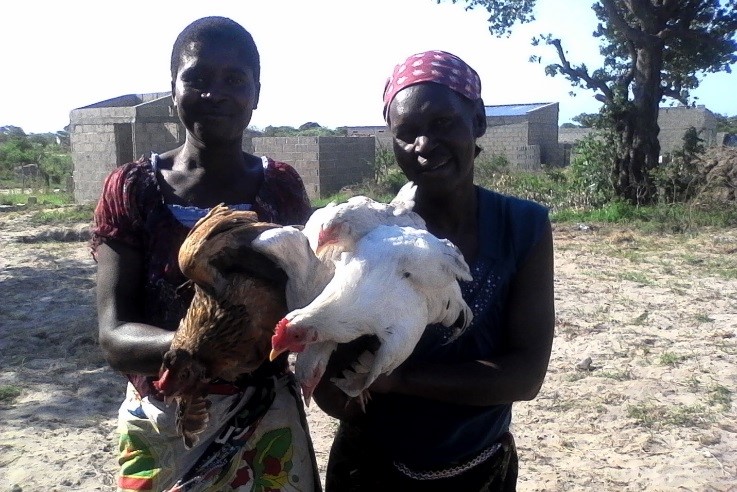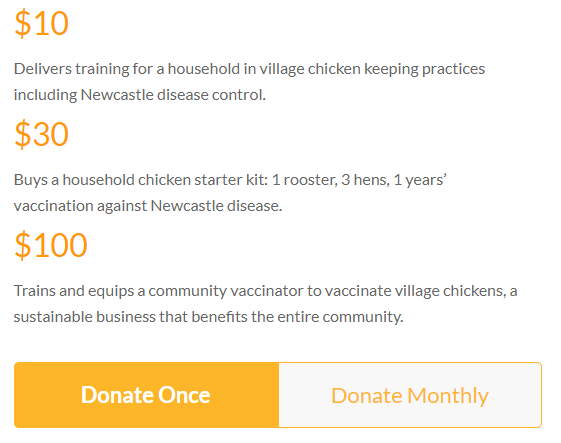Vaccinated Village Chickens for HIV and AIDS affected households in Mozambique
HIV in Mozambique
HIV prevalence is particularly high in Mozambique, and in 2015, an estimated 1.5 million people were living with HIV in the country. Prevalence is estimated to be at 10.5%, the eighth highest in the world, and is most common in the southern part of the country. In young women aged 15 to 24, the estimated HIV prevalence rate is 10.7%, compared to a prevalence rate of 3.6% among young men in the same age group.
The families affected by HIV and AIDS are chronically unable to meet basic household food needs adequately because adults become ill, die or must provide increasing care for ill relatives or orphans. It is for this reason that nearly half of the people with HIV living in poor urban areas have a high prevalence of food insecurity. It is therefore important to ensure that people who test positive for HIV have immediate access to HIV services, including good nutrition.
Meet Mrs Berta Chilaule (left) who is accompanied by Mrs Ivone Chemane, the technician from the district Health, Women and Social Welfare Services.
Our work
Our most recent project was implemented in Marracuene district. HIV prevalence here is estimated at 10% and the district has one of the highest numbers of village chickens in Maputo province. Chickens are generally owned and managed by women and children (Guèye, 2000) and are often essential elements of female-headed households (Bagnol, 2001). As women are the main carers of sick people, chickens can play an important role as they provide the women with additional resources to carry out their important task of supporting people living with AIDS.
This project is funded by our loyal KYEEMA individual supporters.
.
Objectives
1. Help reduce malnutrition in the families of the most vulnerable women, children and people with HIV/AIDS.
– Purchase and distribute 800 village chickens (600 hens, 200 roosters) to 200 chicken-less households.
– Targeted households comprise of women, orphans and vulnerable children, and HIV/AIDS affected people.
– Beneficiaries receive training on how to:
o build chicken houses,
o use local feed
o control ND and other chicken related diseases
o monitor and evaluate vaccination campaigns
2. Train community vaccinators against ND.
– 36 community vaccinators (50% women 50% men) trained in ND control and implementation of ND vaccination campaigns.
– Community vaccinators selected in collaboration with District Services of Economic Activities.
3. Implement vaccination campaigns.
– Three vaccination campaigns carried out each year.
– Campaigns publicised in the meetings with village leaders and the communities.
Impact
In 2017:
200 households (600 hens and 200 roosters) – 200 chicken starter packs given away
806 households helped
36 vaccinators trained
3 vaccine campaigns supported
Outcomes
Decreased chicken mortality.
Increased availability of chicken meat, eggs and income from chicken and egg sales which can be spent on more diverse food and other immediate needs for the household.
Reduced inequalities for disability and HIV/AIDs affected households by providing a step out of poverty and improved food security.
Sustainability
Sustainability is achieved through the ongoing work of the community vaccinators, who will continue to benefit from the income received through payments from households for using their vaccination services.
We continue to fund projects of this nature throughout the provinces in Mozambique through KYEEMA #chickens4Africa #kuku4thegirl #buildtheflock fundraising campaigns


